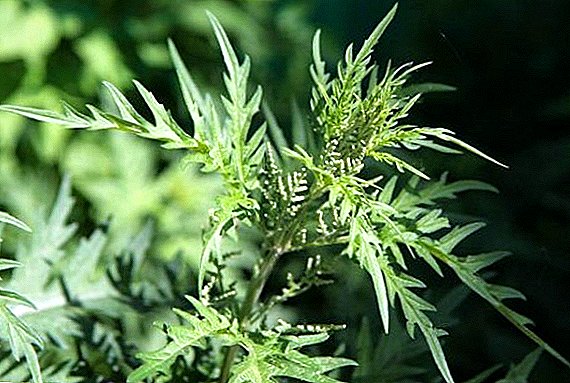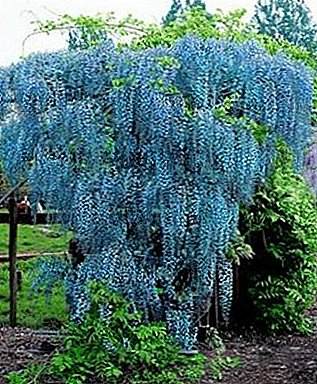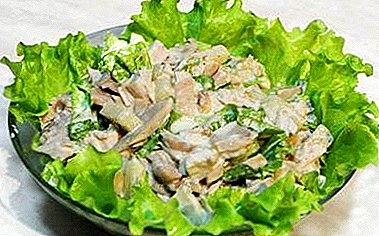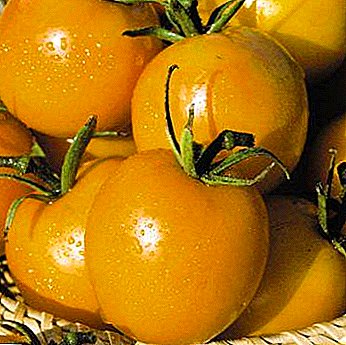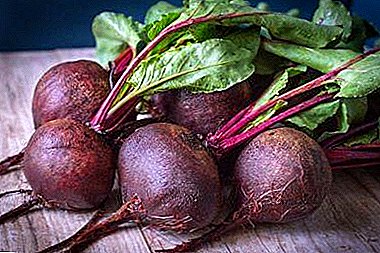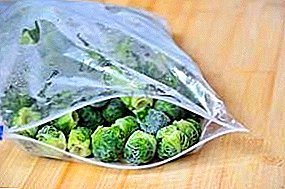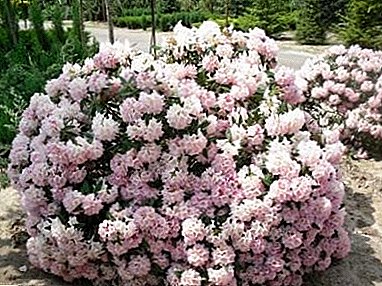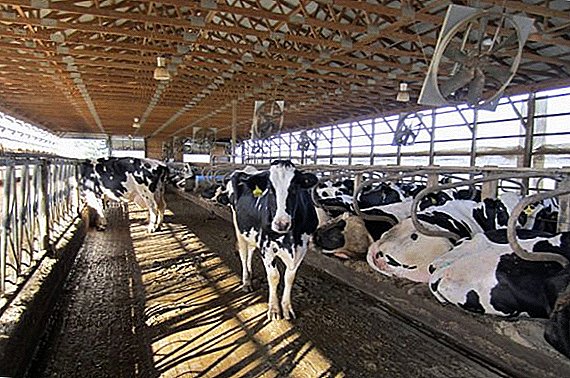 The incidence of livestock depends on the care of animals and their living conditions, including the availability of optimal indicators of air temperature and humidity in the barn. In order for the characteristics of the microclimate to be correct, it is necessary to organize an appropriate air exchange.
The incidence of livestock depends on the care of animals and their living conditions, including the availability of optimal indicators of air temperature and humidity in the barn. In order for the characteristics of the microclimate to be correct, it is necessary to organize an appropriate air exchange.
What is ventilation in the barn for?
The main tasks of the ventilation system:
- air exchange organization;
- maintaining the level of humidity and temperature at the level of regulatory.
 Barns built of reinforced concrete do not keep the temperature inside well and are very dependent on the temperature outside. In the cold season, in a room without ventilation, dampness increases and it becomes cold, and in summer it becomes hot, which contributes to an increase in the incidence rate.
Barns built of reinforced concrete do not keep the temperature inside well and are very dependent on the temperature outside. In the cold season, in a room without ventilation, dampness increases and it becomes cold, and in summer it becomes hot, which contributes to an increase in the incidence rate.Did you know? Natural ventilation in livestock buildings was used until the XIX century. The used exhaust air system is based on the theory of the movement of air flows in pipes and channels, developed by M. Lomonosov.
Ventilation methods
Ventilation can be natural, artificial and mixed. In livestock farms with small livestock, natural ventilation is usually used, i.e., air exchange with supply and exhaust ducts.
There are only three ways of ventilation:
- natural;
- artificial;
- mixed
Natural
The natural flow of air into the barn is carried out by air exchange from doors, windows, existing slots, ventilation openings for the movement of flows.  In the barn, special openings in the walls can be created for the entry of air and exhaust pipes on the roof, through which the used leaves. In the normal operation of such a system, farmers nevertheless note the presence of flaws:
In the barn, special openings in the walls can be created for the entry of air and exhaust pipes on the roof, through which the used leaves. In the normal operation of such a system, farmers nevertheless note the presence of flaws:
- it is impossible to calculate the power of the system;
- there is no possibility to influence humidity or temperature;
- in the process of circulation appear stagnant air;
- oxygen enters the room along with dust and other pathogens that are contained in the atmosphere;
- indoor climate is very dependent on weather conditions outside.
 The movement of air masses with natural ventilation in the barn Natural air exchange can be improved with the help of additional equipment: light ridge on the roof of the building and ventilation grilles on the walls. The light ridge is a structure that is a chimney and at the same time a lighting device for the barn.
The movement of air masses with natural ventilation in the barn Natural air exchange can be improved with the help of additional equipment: light ridge on the roof of the building and ventilation grilles on the walls. The light ridge is a structure that is a chimney and at the same time a lighting device for the barn.
Important! The consequence of poor or inadequate ventilation is moisture condensation. Excess moisture is manifested as misting on metal surfaces with a humidity level above 75%.
Artificial
Artificial ventilation is created with the help of climate technology - fans, special curtains, top open ridge and various valves. The advantages of such a system:
- there is an opportunity to regulate indicators of a microclimate indoors;
- accelerates air circulation;
- effectively removes odors;
- carries out full replacement of air, without stagnant zones.

Mixed (combined)
Mixed ventilation in the barn is a combination of natural and artificial ventilation. It is used everywhere, especially in summer, since most of the time cows are grazing, and the door of the barn remains open, and at night they turn on an artificial ventilation system.
Read about how to build a barn and make a stall for a cow with your own hands.
How to make ventilation in the barn with your own hands
To create the ventilation with your own hands, it will be necessary to calculate the power of the necessary equipment and make a forecast of the temperature conditions that must be achieved with the help of this equipment. In the presence of a small herd, natural ventilation is usually used. Whatever the choice of ventilation system, it will still be necessary to calculate the required parameters.
The initial data for the calculation:
- room size;
- ceiling height;
- wind rose and climatic conditions of the region;
- features of air circulation inside the barn.
 Ventilation curtains for the barn They are designed to regulate the access of air through the supply wall ducts. Installing fans inside allows you to speed up the air exchange and mixing of different air streams to optimize the temperature.
Ventilation curtains for the barn They are designed to regulate the access of air through the supply wall ducts. Installing fans inside allows you to speed up the air exchange and mixing of different air streams to optimize the temperature.Important! Check the operation of the exhaust channel is very simple. If you bring a napkin to it, then under normal and closed supply channels it draws into the channel. A dropped napkin indicates no thrust. If the thrust appears when opening the supply channels, it means that the air flow is insufficient.
Norms and calculation of air exchange
The air velocity should be 0.3 m / s. Relative humidity - 40% at +25 ° C. Temperature inside - from -5 ° C to +25 ° C. Cows emit a lot of heat, so they feel more comfortable at low temperatures. Estimated air exchange is calculated by the combined heat and moisture in the room. The required amount of air takes into account the level of evaporation (g / h), taking into account the correction for the breath of cows.
The calculation of air exchange is determined by the formula - L = Q * K + a / q1 - q2, where:
- L is the required air volume (cubic meters / hour);
- Q - the actual level of evaporation;
- K - correction factor for moisture released during respiration of animals;
- evaporation intensity correction factor;
- q1 is the absolute humidity of the air that is inside the room;
- q2 is the absolute humidity of the incoming stream.
Check out the best breeds of cows.
Materials and tools
Fence openings are located in the lower part of the building, closer to the foundation, from the side of the wind rose. The inlets are mounted in the form of pipelines leading to the roof.  For the organization of natural exhaust ventilation will need:
For the organization of natural exhaust ventilation will need:
- exhaust ventilation boxes 50x50 cm and PVC pipes. The diameter of the exhaust duct must be at least 40 cm;
- rectangular boxes on the wall, size 1.5x1 m.
Did you know? Cows do not like loneliness. Retire can either a cow before calving, or a sick animal.
Manufacturing steps
The process of creating ventilation is:
- On the roof of the barn mounted ventilation boxes. The distance between them should be at least 2 m. The number of boxes depends on the required air exchange (at least 12 cubic meters per hour per 1 ton of live weight).
- Plastic ventilation ducts on the walls are located at a distance of at least 3 m between them and a height of 2 m from the floor. Outside the canals should be covered with wind guards.
- Fans can be placed at a height of at least 2.5 m from the floor at a distance of at least 20 m from each other.
 Ventilation channels are displayed on the roof
Ventilation channels are displayed on the roofFind out how much an average cow, bull, calf weighs.
Keeping animals requires creating a comfortable habitat to maintain their productive qualities. The use of ventilation of one type or another directly depends on the size of the barn and the number of cows. Properly circulating air exchange prevents the accumulation of excess moisture and gases in the room and contributes to the preservation of the health of animals.


